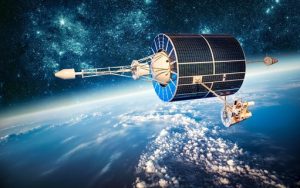The introduction of the depth camera and LIDAR technology in the digital market has revolutionized resolution and range levels of output images. The two technologies are collectively referred to as depth-sensors. Depth-sensors are used to determine object distance. Most importantly, these sensors’ uniqueness enables them to figure out the depth of target objects accurately.
Both systems produce 3D imaging of target objects. Despite their similarities, these systems have stark differences.
LIDAR systems
The LIDAR system is the technology deployed in determining the speed and distance of target objects from the sensor. LIDAR sensors usually emit near-infrared laser light towards target objects. Object distance and velocity are determined by analyzing the time taken for the beam to return to the sensor.
Depth camera
One unique attribute of a depth camera is its capability to figure out target object depth and its texture and pixel. Unlike LIDAR technology, a depth camera measures infrared light intensity focused on the target object.
Comparisons between LIDAR systems and depth camera
- Primary purpose
LIDAR systems are designed to determine the target object distance as well as velocity from the LIDAR sensor. Conversely, a depth camera possesses a unique capability for figuring out object depth and texture.
- Functionality
LIDAR technology uses a laser beam to determine object distance. This beam is illuminated towards the target object. The time it takes for the transmitted light to return to the sensor is analyzed to determine object distance. On the other hand, a depth camera measures the intensity of light emitted and reflected to determine the target object’s depth and pixel.
- Environmental suitability
The use of LIDAR technology produces high-resolution 3D imaging. Global Positioning System is usually integrated into LIDAR systems for mapping and provision of precise geographical data. As such, LIDAR systems are best suited to perform in outdoor environments.
Its indoor sensing capabilities are quite limited to building layout and design. In contrast, a depth camera operated correctly in both indoor and outdoor environments. It produces high-resolution 3D imaging of both outdoor objects and interiors of buildings.
- Technology
LIDAR uses sensors that transmit a beam of laser light towards the object of interest. When this pulse of light bounces off of the object and returns to the sensor, it’s analyzed to determine the object’s distance and velocity. Data on how long it takes for the beam to return and its wavelength is used to derive object distance.
On the contrary, a depth camera uses infrared light illuminated towards the object to figure out its pixel and depth. In this instance, a stereo vision approach is crucial to help achieve that goal.
- Effectiveness in varied weather and lighting conditions
LIDAR sensors are affected by bad weather conditions but work well day and night. On the other hand, a depth camera is affected by object range and varying lighting conditions. It doesn’t work well at night unless it’s supplemented with a light source.
- Object recognition capability
A LIDAR system’s most significant limitation is its limited capability to sufficiently scan and understand the scene, not to identify object shapes, colours, texture, et cetera. On the flip side, a depth camera possesses the capability to identify objects, their shapes, colours, texture, et cetera.
- Cost
LIDAR technology is far more expensive than a depth camera because of its high resolution and object data accuracy.
The bottom line
A LIDAR system utilizes a beam of laser light to capture object data. The time taken for the beam to return to the sensor is used to calculate object distance and velocity. On the contrary, a depth camera uses infrared light illuminated towards the object, although the intensity of light transmitted and reflected is used to figure out object depth.
Lastly, as we’ve observed, these depth-sensors exhibit stark differences in terms of their primary purpose, functionality, object recognition capability, cost, et cetera.





